Warships from more than 10 countries were sent to patrol the Gulf of Aden—the only place that leads to and from the Suez Canal and connects the Indian Ocean with the Mediterranean Sea.
Although the 15-nautical-mile corridor at the Gulf of Aden is protected from pirates by warships from countries including the United States, Canada, and Russia, areas on the outside remain vulnerable to attack, according to Bulgarian navigation officer Ivan Zhelyazkov.
To avert any run-ins with the international navy, Somali pirates have switched their area of operations, which now stretches as far as the Seychelles Islands. When the pirates began their attacks years ago, the international navy was advised to keep a distance of 200 miles when passing along the coast of Somalia. The distance later grew to 500 miles, and then to the current 1,000 miles, said Zhelyazkov.
Close to 30 percent of the world’s oil is transported through the Gulf of Aden, annually, and an estimated 16,000 vessels pass through, according to official statistics cited by the leading Bulgarian economic weekly, Capital.
Each ship for the pirates is seen as a fortune waiting to be grabbed. Little regard is often paid to what the ship carries, as in most cases, the ransom is where the money comes from. Ransoms typically paid by ship owners can vary anywhere between $300,000 and $6 million.The Rise of Piracy
Although the 15-nautical-mile corridor at the Gulf of Aden is protected from pirates by warships from countries including the United States, Canada, and Russia, areas on the outside remain vulnerable to attack, according to Bulgarian navigation officer Ivan Zhelyazkov.
To avert any run-ins with the international navy, Somali pirates have switched their area of operations, which now stretches as far as the Seychelles Islands. When the pirates began their attacks years ago, the international navy was advised to keep a distance of 200 miles when passing along the coast of Somalia. The distance later grew to 500 miles, and then to the current 1,000 miles, said Zhelyazkov.
Close to 30 percent of the world’s oil is transported through the Gulf of Aden, annually, and an estimated 16,000 vessels pass through, according to official statistics cited by the leading Bulgarian economic weekly, Capital.
Each ship for the pirates is seen as a fortune waiting to be grabbed. Little regard is often paid to what the ship carries, as in most cases, the ransom is where the money comes from. Ransoms typically paid by ship owners can vary anywhere between $300,000 and $6 million.
The Rise of Piracy
The Gulf of Aden is not the only area in the world where ships are at risk of pirate attacks. Also critical are the narrow Strait of Malacca in the Indian Ocean, and the Caribbean region in the Atlantic Ocean.
Aside from the Gulf of Aden, the most threatened areas are off the coasts of Nigeria, the Philippines, and Indonesia, although the rate of successful attacks is not very high. Typically, vessels are robbed, but the crew and ship are often left alone, according to Zhelyazkov.
Piracy tends to be more prevalent in countries with higher poverty rates, and where local authorities have little power, according to Zhelyazkov. This has become an impeding factor in thwarting piracy through the use of force.
In Somalia, where there is little governance and poverty is rampant, the problem of piracy is more pronounced. The country is divided into various tribes.
Individuals in the freight business are of the theory that the most effective solution in halting piracy off the Somali coast is to stabilize the situation in the country, where civil conflict has raged for 18 years.
Somalia fell into anarchy after its former dictator, Mohamed Siad Barre, was overthrown in 1991. This gave way to Asian and European ships poaching and dumping industrial waste in Somali waters.
Ahmedou Ould-Abdallah, the U.N. secretary-general’s special representative to Somalia, said in an interview with the London Independent that the 9 million people in Somalia began to starve in the years following their civil war. Disease spread along the coasts, people began getting strange rashes, and birth defects became more common.
A tsunami in 2005 pulled up toxic barrels from the waters and threw them across the coastal cities. Many people became ill, and hundreds died.
“Somebody is dumping nuclear material here. There is also lead, and heavy metals such as cadmium and mercury—you name it,” Ould-Abdallah said, adding that widespread poaching in Somali waters has caused many people in Somalia to die of starvation.
Poaching and dumping of toxic waste by foreign ships spurred local fishermen and fighters to form groups called the “Somali Coastal Guards” and “National Voluntary Coastal Guards” to drive away or detain ships from countries including South Korea, Italy, Spain, and Thailand, according to Bulgarian news website Vesti.bg.
It soon became clear to them how easy it was to abduct a ship. The groups then began forming pirate gangs and expanded their operations, improving their skills with each ship they captured.
A movie series by Bulgarian National Television was the first that managed to film cadres in the pirate town Eyl. The film reveals that the alleged “peaceful life” in Somalia is only a smokescreen.
The moviemakers begin their film in Bussaso, the largest port city in Somalia, where pirates buy weapons, satellite telephones, boats, and other equipment for their attacks.
The movie concentrates on the pirates themselves—their way of life, their families, and the reason why ordinary fishermen and even adolescents living in extreme poverty would join the pirate groups. “Being a pirate is like a promotion for an ordinary fisherman,” a novice in the pirate business told the journalists.
Use of Force
Aside from the Gulf of Aden, the most threatened areas are off the coasts of Nigeria, the Philippines, and Indonesia, although the rate of successful attacks is not very high. Typically, vessels are robbed, but the crew and ship are often left alone, according to Zhelyazkov.
Piracy tends to be more prevalent in countries with higher poverty rates, and where local authorities have little power, according to Zhelyazkov. This has become an impeding factor in thwarting piracy through the use of force.
In Somalia, where there is little governance and poverty is rampant, the problem of piracy is more pronounced. The country is divided into various tribes.
Individuals in the freight business are of the theory that the most effective solution in halting piracy off the Somali coast is to stabilize the situation in the country, where civil conflict has raged for 18 years.
Somalia fell into anarchy after its former dictator, Mohamed Siad Barre, was overthrown in 1991. This gave way to Asian and European ships poaching and dumping industrial waste in Somali waters.
Ahmedou Ould-Abdallah, the U.N. secretary-general’s special representative to Somalia, said in an interview with the London Independent that the 9 million people in Somalia began to starve in the years following their civil war. Disease spread along the coasts, people began getting strange rashes, and birth defects became more common.
A tsunami in 2005 pulled up toxic barrels from the waters and threw them across the coastal cities. Many people became ill, and hundreds died.
“Somebody is dumping nuclear material here. There is also lead, and heavy metals such as cadmium and mercury—you name it,” Ould-Abdallah said, adding that widespread poaching in Somali waters has caused many people in Somalia to die of starvation.
Poaching and dumping of toxic waste by foreign ships spurred local fishermen and fighters to form groups called the “Somali Coastal Guards” and “National Voluntary Coastal Guards” to drive away or detain ships from countries including South Korea, Italy, Spain, and Thailand, according to Bulgarian news website Vesti.bg.
It soon became clear to them how easy it was to abduct a ship. The groups then began forming pirate gangs and expanded their operations, improving their skills with each ship they captured.
A movie series by Bulgarian National Television was the first that managed to film cadres in the pirate town Eyl. The film reveals that the alleged “peaceful life” in Somalia is only a smokescreen.
The moviemakers begin their film in Bussaso, the largest port city in Somalia, where pirates buy weapons, satellite telephones, boats, and other equipment for their attacks.
The movie concentrates on the pirates themselves—their way of life, their families, and the reason why ordinary fishermen and even adolescents living in extreme poverty would join the pirate groups. “Being a pirate is like a promotion for an ordinary fisherman,” a novice in the pirate business told the journalists.
Continued on the next page...
Use of Force
The strategy of the pirates is to attack quickly. They typically deploy on speed boats launched from a larger mother ship. While approaching, they’ll threaten the crew with rocket-propelled grenade launchers, while others armed with assault rifles board the vessel.
Three groups compose their ranks: fishermen who know the sea, former insurgents and soldiers who launch the attacks, and individuals who can speak different languages and are familiar with modern technology.
Their most common targets are merchant ships, which are slow moving and easily accessible. Once captured, the ships are taken to Somali ports where they are held for ransom.
The individuals most affected by the attacks are crew members of the abducted ships who live in stress and are subjected to hunger, fear, and sleeplessness. Their families also suffer, as for months they live in uncertainty of what the outcome will be.
While crossing the Gulf of Aden, ships take their own measures for protection. Some line the ship with barbed wire, arming themselves with weapons such as rifles and Molotov cocktails, while some use nonlethal sonar and thermal weapons.
The Bulgarian ship Panega and its 15 crew members were captured by pirates on May 11. They were bound for Pakistan, where the ship would be sold for scrap parts. The ship and its crew were released in September, nearly four months after they were captured.
The same day they were released, however, pirates captured another ship, the German Magellan Star. Not long after, U.S. Special Forces retook the ship, freed its crew, and captured nine pirates.
Crew members onboard took refuge in a sealed panic room, the ship’s operator Dr. Peters told the media. When the pirates boarded they found the ship empty with its engine turned off. Confused, they called the ship company to find out what was going on. A man with broken English said over the phone: “What’s going on here?” and “Why doesn’t the engine work?” Company staff told them that the crew was on holiday and the engine was out of order.
Russia’s brutal response to the pirates has proven as the most effective in stopping the attacks. After the Russian tanker Moskovski Universitet and its 23 crew members were captured by pirates on May 5, Russia retaliated.
Crew members sealed themselves in the panic room and Russian authorities sent their navy ship, Marshal Shaposhnikov and a helicopter to the site. Pirates opened fire on the helicopter and the Russians fired back. One Somali pirate was killed and 10 others were captured.
The captured pirates were set “free” on an inflatable raft without any supplies on the open sea, according to Reuters. There have been no pirate attacks on Russian ships since.
U.S. forces have launched several successful rescue operations on ships captured by pirates. In 2009, Navy SEAL snipers killed three pirates to free a U.S. captain.
Similar incidents have taken place when pirates had run-ins with the navy of other countries as well. According to CNN, a skirmish with the Indian warship INS Tabar in November 2008 ended with the sinking of what the Indian navy alleges was a pirate “mother ship”.
In 2008 alone, Somali pirates carried out nearly 100 attacks in the Gulf of Aden and successfully captured 45 vessels. According to the London-based International Maritime Bureau’s piracy reporting center, attacks by Somali pirates against commercial ships in the first quarter of 2009 doubled from that of the previous year.
Overall, the rescue missions and retaliations have done little to stop the pirates, and paying ransoms has done little to insure countries from further attacks. Rather, the prevalence of attacks has been growing.
Three groups compose their ranks: fishermen who know the sea, former insurgents and soldiers who launch the attacks, and individuals who can speak different languages and are familiar with modern technology.
Their most common targets are merchant ships, which are slow moving and easily accessible. Once captured, the ships are taken to Somali ports where they are held for ransom.
The individuals most affected by the attacks are crew members of the abducted ships who live in stress and are subjected to hunger, fear, and sleeplessness. Their families also suffer, as for months they live in uncertainty of what the outcome will be.
While crossing the Gulf of Aden, ships take their own measures for protection. Some line the ship with barbed wire, arming themselves with weapons such as rifles and Molotov cocktails, while some use nonlethal sonar and thermal weapons.
The Bulgarian ship Panega and its 15 crew members were captured by pirates on May 11. They were bound for Pakistan, where the ship would be sold for scrap parts. The ship and its crew were released in September, nearly four months after they were captured.
The same day they were released, however, pirates captured another ship, the German Magellan Star. Not long after, U.S. Special Forces retook the ship, freed its crew, and captured nine pirates.
Crew members onboard took refuge in a sealed panic room, the ship’s operator Dr. Peters told the media. When the pirates boarded they found the ship empty with its engine turned off. Confused, they called the ship company to find out what was going on. A man with broken English said over the phone: “What’s going on here?” and “Why doesn’t the engine work?” Company staff told them that the crew was on holiday and the engine was out of order.
Russia’s brutal response to the pirates has proven as the most effective in stopping the attacks. After the Russian tanker Moskovski Universitet and its 23 crew members were captured by pirates on May 5, Russia retaliated.
Crew members sealed themselves in the panic room and Russian authorities sent their navy ship, Marshal Shaposhnikov and a helicopter to the site. Pirates opened fire on the helicopter and the Russians fired back. One Somali pirate was killed and 10 others were captured.
The captured pirates were set “free” on an inflatable raft without any supplies on the open sea, according to Reuters. There have been no pirate attacks on Russian ships since.
U.S. forces have launched several successful rescue operations on ships captured by pirates. In 2009, Navy SEAL snipers killed three pirates to free a U.S. captain.
Similar incidents have taken place when pirates had run-ins with the navy of other countries as well. According to CNN, a skirmish with the Indian warship INS Tabar in November 2008 ended with the sinking of what the Indian navy alleges was a pirate “mother ship”.
In 2008 alone, Somali pirates carried out nearly 100 attacks in the Gulf of Aden and successfully captured 45 vessels. According to the London-based International Maritime Bureau’s piracy reporting center, attacks by Somali pirates against commercial ships in the first quarter of 2009 doubled from that of the previous year.
Overall, the rescue missions and retaliations have done little to stop the pirates, and paying ransoms has done little to insure countries from further attacks. Rather, the prevalence of attacks has been growing.
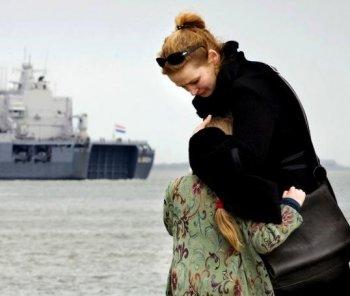
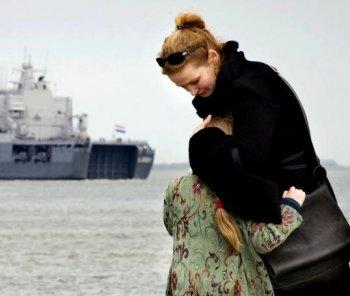
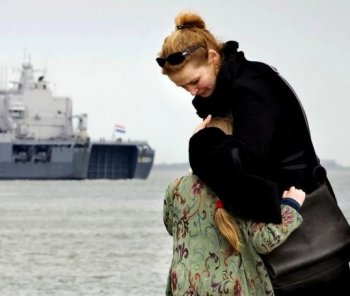
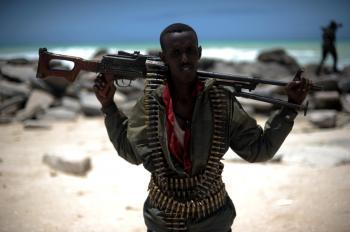
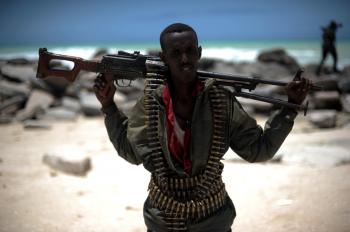
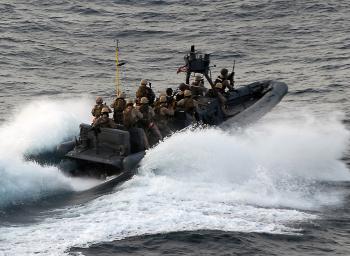
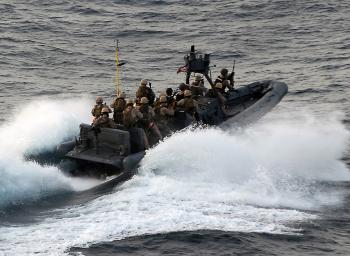


Friends Read Free